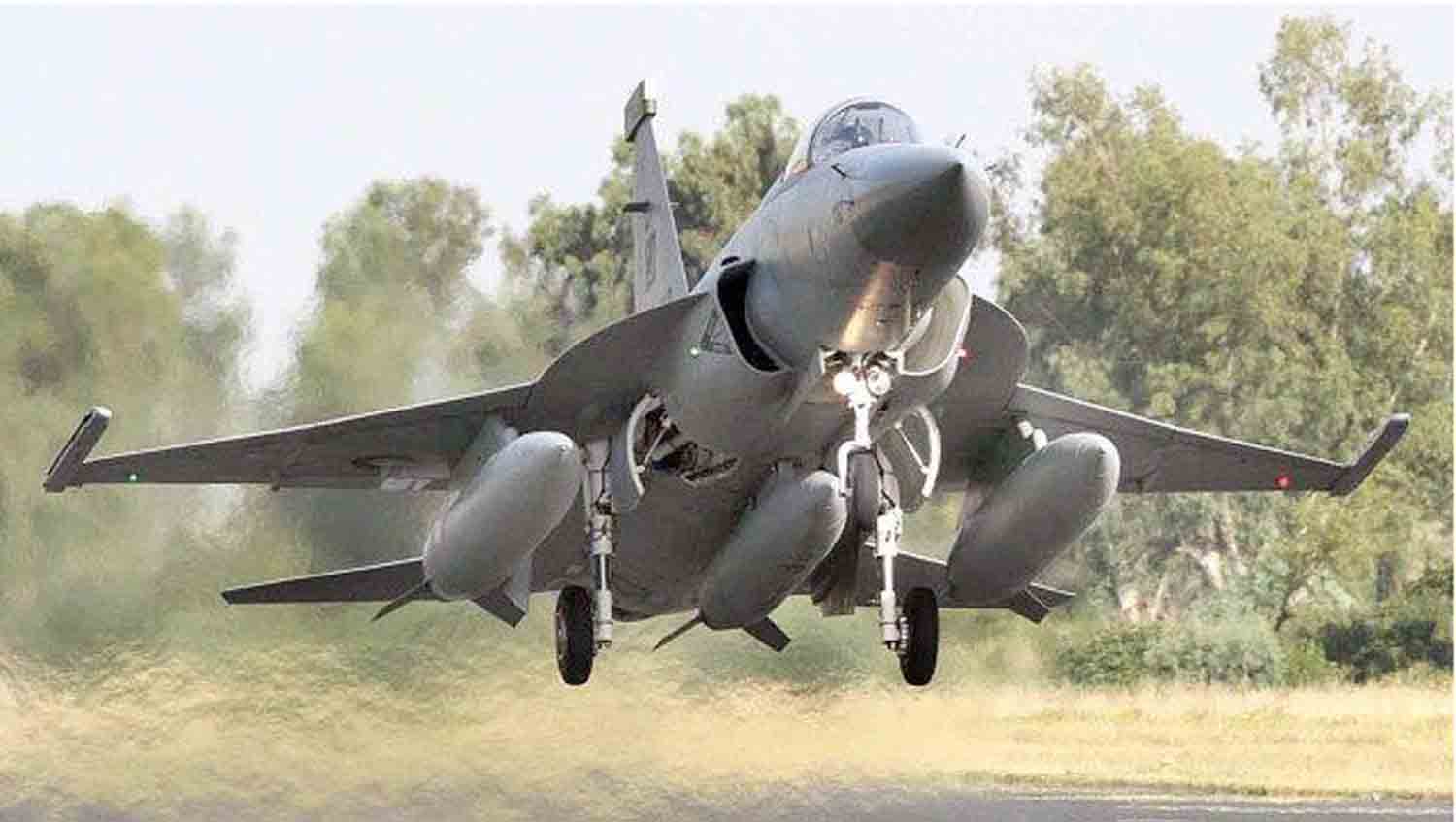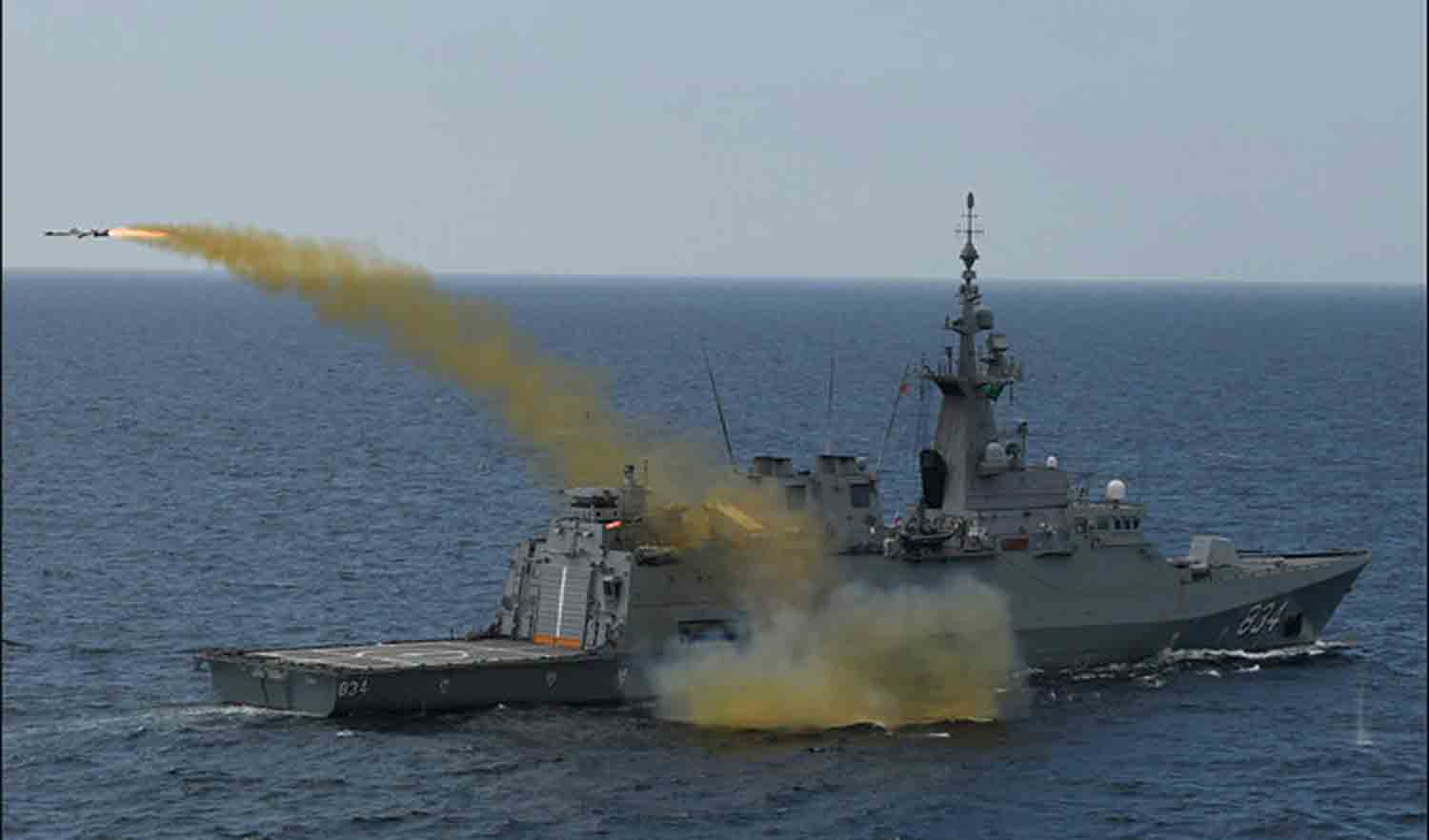The JF-17 Block III recently showcased its capabilities at the multinational air combat exercise Victory Spear 2025 in Saudi Arabia. Organized by the Royal Saudi Air Force’s Air Warfare Center, this high-intensity Live Execution Exercise (LIVEX) featured a diverse array of airpower, evaluating the combat readiness of advanced fighter jets in realistic scenarios.
Saudi Arabia contributed its F-15s, EF-2000s, and Tornados, while Bahrain sent F-16s. The lineup was further enhanced by France’s Rafales, Pakistan’s JF-17s, Qatar’s EF-2000s, the UAE’s Mirage 2000-5s, the UK’s EF-2000s, and the United States’ F-16s. Greece played a significant role in the exercises, with Australia, Egypt, Jordan, Italy, Morocco, and Spain observing the proceedings.
A notable highlight was the Pakistan Air Force’s long-range operation of the JF-17 Block III, which involved a non-stop flight from Pakistan to Saudi Arabia and back, facilitated by in-flight refueling.
This operation highlighted the aircraft’s impressive mission endurance and operational capabilities. As stated by the Inter-Services Public Relations (ISPR), the exercise served as a platform for the JF-17 Block III to showcase its advanced avionics, weaponry, and combat effectiveness against some of the world’s leading fighter jets.
Running from January 26 to February 6, the exercise tested the boundaries of aerial warfare strategy, emphasizing the need to counter contemporary threats, refine advanced tactics, and improve multinational cooperation.
The JF-17 Block III engaged in direct competition with Western-built aircraft, gaining attention for its maneuverability, firepower, and sophisticated electronic warfare capabilities. As global interest in this fighter continues to rise, its performance during Victory Spear 2025 solidified its reputation as a proficient and economical combat aircraft.
Developed by the Pakistan Aeronautical Complex (PAC) in partnership with China’s Chengdu Aircraft Industry Group (CAIG), the JF-17 Block III is a multirole combat aircraft. Initially referred to as the FC-1, this lightweight, single-engine fighter has become a cornerstone of the Pakistan Air Force (PAF).
The Block III variant, which debuted in 2020, offers substantial enhancements over the earlier Block I and Block II models, improving its avionics, radar, weaponry, and overall performance. This iteration of the JF-17 is tailored to address the increasing demand for advanced and adaptable combat platforms in today’s air combat landscape, effectively balancing cost and capability.
A key advancement in the Block III variant is the incorporation of the Chinese-made active electronically scanned array (AESA) radar, marking a significant improvement in both air-to-air and air-to-ground radar functionalities. The AESA radar, combined with cutting-edge signal processing technology, enables exceptional target tracking, long-range detection, and the capability to engage multiple targets at once.
This radar system significantly enhances the aircraft’s survivability, enabling effective operations in contested environments where electronic warfare may jeopardize conventional radar systems. The Block III aircraft is also outfitted with a state-of-the-art avionics suite, which includes a modern glass cockpit with a digital wide-angle heads-up display (HUD) and multifunctional displays that improve pilot situational awareness.
Beyond the radar enhancements, the Block III JF-17 is powered by a more robust engine, the RD-93MA, which delivers superior thrust and fuel efficiency compared to earlier models. This engine is an upgraded variant of the RD-93, recognized for its dependability and performance across various combat situations.
The RD-93MA engine boasts an improved thrust-to-weight ratio, which enhances the aircraft’s overall capabilities in acceleration, climb rate, and combat maneuverability. Its increased fuel efficiency broadens the aircraft’s operational range, making it a more formidable asset for long-range interdiction missions and extended operations.
Additionally, the JF-17 Block III features an integrated electronic warfare (EW) system aimed at bolstering the aircraft’s survivability in highly contested areas. This system comprises jamming pods, radar warning receivers, and countermeasure systems, enabling the fighter to detect and counter threats from enemy radar, missiles, and other hostile electronic signals.
The incorporation of advanced electronic warfare (EW) capabilities greatly enhances the aircraft’s performance in scenarios where adversaries utilize sophisticated countermeasures and radar technologies. This ensures that the JF-17 Block III maintains its competitive edge in a rapidly changing combat environment.
Another vital aspect of the JF-17 Block III is the significant enhancement in its weaponry. The aircraft is capable of carrying a diverse array of munitions, such as precision-guided bombs, air-to-air missiles, and air-to-ground missiles, which allows it to function effectively in both defensive and offensive roles.
The Block III variant can be outfitted with the latest Chinese PL-15 and PL-10 air-to-air missiles, offering extended-range interception capabilities against both conventional and advanced enemy aircraft.
Moreover, the aircraft is compatible with a variety of Western munitions, including precision-guided munitions (PGMs) and laser-guided bombs, which improves its interoperability with NATO and allied forces. The JF-17 Block III is also equipped to conduct anti-ship and strike missions, owing to its compatibility with multiple air-to-surface missile systems.
A significant feature of the Block III upgrade is its sophisticated data-link system, which facilitates real-time communication and information exchange with other aircraft, ground stations, and command-and-control networks.
The JF-17 Block III is equipped to function within a networked framework, enabling it to both receive and transmit essential intelligence data. This capability significantly enhances the situational awareness of the pilot and the broader combat unit. Furthermore, the data link facilitates the sharing of targeting information, which improves strike accuracy and allows for coordinated engagements with allied platforms.
The cockpit of the JF-17 Block III showcases a modern glass cockpit design, representing a notable advancement from earlier versions. It features a wide-angle heads-up display (HUD), two expansive multifunctional displays (MFDs), and a digital flight control system.
This contemporary cockpit layout enables pilots to swiftly and easily access vital information, which is crucial in high-stress combat scenarios. Additionally, the cockpit incorporates a new fly-by-wire system that enhances handling and stability, especially in challenging combat conditions. This system also boosts the aircraft’s agility and maneuverability, making it a formidable platform for air-to-air engagements.
While the airframe of the JF-17 Block III shares similarities with its predecessors, this variant boasts enhancements in structural integrity and survivability. The aircraft is engineered to endure the demands of high-speed maneuvers and combat conditions, featuring a reinforced airframe and advanced materials that offer improved resistance to wear and tear.
The JF-17 Block III is designed to function effectively in more demanding conditions, thereby extending its operational lifespan and lowering the total cost of ownership for the Pakistan Air Force and other potential users.
This version features state-of-the-art avionics, including a new mission computer and a digital flight control system, which significantly improve the aircraft’s operational versatility. The mission computer facilitates the swift processing of essential mission data, while the flight control system allows for a broader range of intricate maneuvers with enhanced accuracy and stability.
The incorporation of these sophisticated systems positions the JF-17 Block III as a highly proficient and versatile fighter, capable of engaging in various combat situations, from air dominance operations to precision strike missions.
Equipped with cutting-edge avionics and sensors, the JF-17 Block III enhances both its offensive and defensive capabilities. Notably, it includes an integrated helmet-mounted sight system (HMSS) that enables pilots to track and lock onto targets using only head movements.
This feature provides a considerable edge in aerial combat, as it boosts the pilot’s situational awareness and engagement time while minimizing response time during missile confrontations. Additionally, the JF-17 Block III can be outfitted with a digital map system, delivering real-time navigation information and helping the pilot maintain orientation in complex environments.
The JF-17 Block III plays a significant role in the complex air combat landscape, designed to function effectively in multi-threat environments. It collaborates seamlessly with other assets, including AWACS (Airborne Warning and Control Systems) and UAVs (Unmanned Aerial Vehicles), to deliver a coordinated and networked response to adversarial threats.
Equipped with state-of-the-art sensors and a sophisticated data-link system, the JF-17 Block III can integrate into a larger operational framework, facilitating intelligence sharing and enhancing mission execution accuracy.
Additionally, the aircraft features an advanced weapon control system that optimizes the management and deployment of munitions during engagements. This system works in conjunction with the aircraft’s radar and sensor suite, ensuring precise and efficient targeting of threats.
The JF-17 Block III is capable of executing both guided and unguided strikes, utilizing precision targeting technologies to effectively engage both mobile and stationary targets. The enhanced weapons management system in this variant further improves the coordination between the aircraft’s armaments and its sensor capabilities.
With its low operational costs and advanced features, the JF-17 Block III presents an appealing choice for nations in search of a modern yet economical fighter aircraft. Its adaptability in air-to-air and air-to-ground missions, along with its comprehensive suite of advanced avionics, sensors, and weaponry, establishes the JF-17 Block III as a competitive platform in the international defense market.
Discover more from Defence Talks | Defense News Hub, Military Updates, Security Insights
Subscribe to get the latest posts sent to your email.





